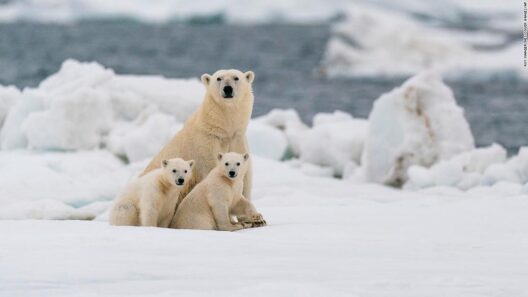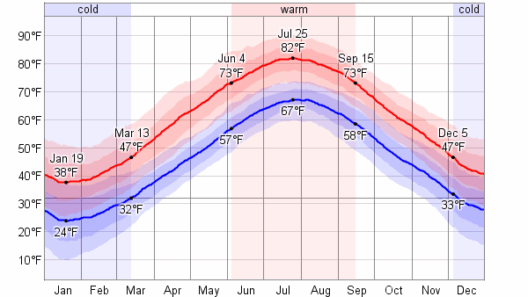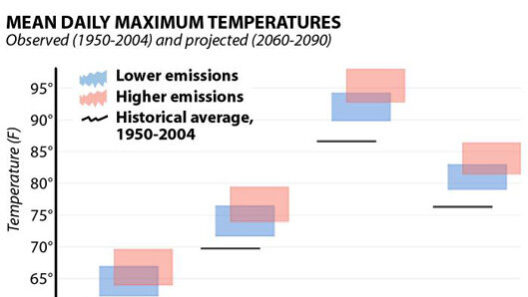Understanding the climate of Kentucky unveils a captivating interplay of atmospheric conditions that shapes the region’s unique environment. The Bluegrass State, famous for its lush pastures and vibrant horse racing culture, experiences distinct seasonal variations that influence agriculture, recreational activities, and daily life. Examining Kentucky’s climate reveals not only the charming character of its summers and winters but also the underlying challenges posed by climate change.
The state exhibits a humid subtropical climate (Köppen classification Cfa), characterized by hot, humid summers and mild to cool winters. This classification underscores the prevalence of moisture-laden air masses that sweep in from the Gulf of Mexico, in tandem with the prevalence of the continental air masses that sometimes descend from the north and bring colder temperatures. The combination produces an array of weather patterns that can dramatically alter from day to day.
Let’s delve into the three primary seasons: summer, autumn, and winter.
Summer in Kentucky is marked by sweltering temperatures and increasing humidity levels. June, July, and August often bring highs ranging from the mid-80s to the low 90s Fahrenheit, sometimes pushing even higher during heatwaves. The warmth can be stifling, with humidity often hovering around 80%. The sultry conditions frequently ignite thunderstorms, as warm, moist air rises and cools, resulting in dramatic displays of nature with heavy rainfall and crackling lightning. The erratic nature of summer storms can contribute to flash floods, a stark reminder of the volatile weather systems we navigate.
In the more rural expanses, agricultural activities flourish during the extended growing season. Corn, soybeans, tobacco, and hay dominate the landscape, with farmers often relying on irrigation systems to combat the parched soils that can arise during particularly dry stretches. This climatic nuance emphasizes the importance of understanding how shifting weather patterns can impact crop yields and the livelihoods of those dependent on agriculture.
Transitioning into autumn, the temperatures begin to moderate, providing a beautiful display of foliage painted in vibrant hues of crimson, gold, and amber. This season offers a reprieve from the punishing heat, with averages dipping into the 70s and 60s Fahrenheit. The cool air serves as an invitation for outdoor activities, from hiking in the numerous state parks to enjoying the local harvest festivals that celebrate the bounty of the land. Autumn also plays a crucial role in wildlife activity, as many species prepare for the upcoming winter months, adding an intriguing layer to the ecological tapestry of Kentucky.
However, autumn is also a time for contemplation. As leaves fall and temperatures drop, scientists and environmentalists increasingly notice a shift in seasonal timing—earlier springs and later winters. These changes directly correlate with global climate phenomena and bring into question the future of native species and agricultural practices within the region.
Winter reveals another facet of Kentucky’s meteorological character. The state does not typically experience the same depth of snow accumulation as its northern neighbors, but it is no stranger to winter weather. Temperatures can plunge into the 30s and occasionally lower, with polar air masses descending intermittently. Snowfall can vary greatly, ranging from a light dusting to heavier accumulations that blanket the landscape. Black ice and sleet present additional hazards during this season, challenging morning commuters and complicating daily life.
Nevertheless, the white-coated terrain unveils a serene beauty that captivates residents and visitors alike. The crisp air invigorates the senses, offering a respite from the demands of a bustling summer. Winter sports, such as snow tubing and skiing, provide recreational opportunities amidst the frost, although these activities are also becoming less predictable with the shifting climate. The perils of climate change have the potential to disrupt not just weather but the very nature of leisure and recreation.
One cannot discuss Kentucky’s climate without reflecting on climate change’s pervasive influence. Veterans of the field have noted gradual alterations: warming temperatures elevate the frequency and intensity of storms, while alterations in precipitation patterns threaten water supplies and ecosystems. Reports suggest that the state could face increased flooding risks and mounting pest pressures affecting crop health, presenting barriers to the agricultural community’s resilience.
Moreover, wildlife is not immune to these disruptions. As habitats shift in response to climate change, species might face challenges in adaptation, leading to declines in certain populations. This reality underscores the necessity of coupling climate awareness with conservation efforts to safeguard Kentucky’s rich biodiversity.
In pursuing solutions, engaging local communities in discussions about sustainable practices is vital. From fostering renewable energy initiatives to enhancing green spaces within urban environments, the potential to ameliorate some of climate change’s impacts lies within collective action. Education plays an equally important role in empowering individuals to understand the climate stakes and consider their choices regarding energy consumption, transportation, and agriculture.
Ultimately, Kentucky’s climate is a dual narrative of beauty and volatility. The state’s hot summers and snowy winters offer distinctive experiences that resonate deeply with its inhabitants. Yet, the unfolding implications of climate change catalyze an urgent call to action. As Kentuckians, the path forward lies in embracing sustainability, fostering resilience, and pursuing innovative solutions to safeguard not only the environment but the enduring spirit of this enchanting state.








